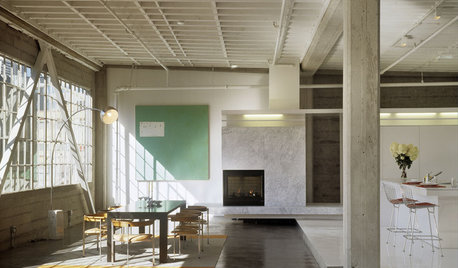Questions regarding Hippiastrums
brigarif Khan
13 years ago
Featured Answer
Sort by:Oldest
Comments (25)
kaboehm (zone 9a, TX USA)
13 years agolast modified: 9 years agoRelated Discussions
The ideal hippiastrum blossom
Comments (9)How'd you find out about that soultan? Last year, since I was downsizing, I donated 50 papilios to the "Houston Amaryllis Society" show and sale. I think we are planning on having this year's show on the 2nd weekend in April, at the Houston Garden Club in Hermann Park, Houston. We're a small club, but generally put on a decent show and sell a good number of bulbs. (come early for best selection) One member was giving a nice pot of Johnsonii to anyone that joined. We had to boot out the past president. Seriously deranged. So be wary of the "Greater Houston Amaryllis Club" were he relocated....See MoreQuestion regarding lights with integrated led
Comments (2)HI Cheryll: I'm sorry no one seems to have responded to this post. I'm searching info about the pros and cons of integrated LEDs for bathroom sconces and face a similar choice. My first choice fixtures have dimmable integrated LEDs. When I asked the supplier if this meant I'd need to replace the entire fixture should the LED fail, I was told yes. That made me think twice about the whole thing. When I read your description, I don't see that this lamp has integrated LEDs so it is confusing. It sounds as if you can replace the LED bulbs as needed....See MoreQuestion regarding large planters
Comments (37)FWIW, portulaca is dead easy to plant from seed. It even self-seeds here in the frozen north. I have found it to be not as common as it once was, so I started growing it from seed. I just literally sprinkle some seeds over and area where I want to plant it. I used to grow it in hanging baskets and porch planters in hot dry areas. Now I have mostly wet shade so I dunno. I have a sort of planting scheme of red, orange and yellow in pots that I put around my fire pit so it isn't just a big circular blob in the yard when we're not having a fire. Last year I planted some kniphofia, can't ever get that to grow from seed. We'll see if it survives. Portulaca might look nice there, for a foliage contrast. Last year I grew some yellow begonias too, that could grow in sun, they looked pretty good, got a lot of compliments. I try to put "hot" looking plants there . . . marigolds, dragon's wing begonias, etc....See MorePlease help...quick question regarding LRV
Comments (3)you are saying is that if I lighten Paris Rain by a certain % to bring LRV up 10 points, I will be left with basically Sweet Spring? Nope. 🙂 Question is why not just use Sweet Spring? There is no way to correlate an ambiguous % to a paint color's attributes - like LRV. Because the question is a % of what exactly? From there it's - possibly - a matter of math provided quantities of colorant are large enough to be cut. I know it sounds logical and every blogger on the internet infers that this is how paint color works. In actual application, across thousands of paint colors, multiple brands I can tell you that is not how it works. When you alter a formula, you change all 3 dimensions: hue, value and chroma. Not just the part you don't like or want to change. In this case, lightness. Essentially it's a new color. Can't know what part of the color will change - or by how much - unless you have it mixed, let it dry and look at it, measure it. At that point you own the can of paint whether you like it or not....See Morekaboehm (zone 9a, TX USA)
13 years agolast modified: 9 years agoryan820
13 years agolast modified: 9 years agomrlike2u
13 years agolast modified: 9 years agokaboehm (zone 9a, TX USA)
13 years agolast modified: 9 years agoryan820
13 years agolast modified: 9 years agoquail
13 years agolast modified: 9 years agosalpal
13 years agolast modified: 9 years agosalpal
13 years agolast modified: 9 years agoryan820
13 years agolast modified: 9 years agobrigarif Khan
13 years agolast modified: 9 years agojoshy46013
13 years agolast modified: 9 years agoNoni Morrison
13 years agolast modified: 9 years agojoshy46013
13 years agolast modified: 9 years agodondeldux z6b South Shore Massachusetts
13 years agolast modified: 9 years agojoshy46013
13 years agolast modified: 9 years agodondeldux z6b South Shore Massachusetts
13 years agolast modified: 9 years agonpublici
13 years agolast modified: 9 years agoryan820
13 years agolast modified: 9 years agojoshy46013
13 years agolast modified: 9 years agoNoni Morrison
13 years agolast modified: 9 years agoryan820
13 years agolast modified: 9 years agobrigarif Khan
13 years agolast modified: 9 years agobrigarif Khan
13 years agolast modified: 9 years ago
Related Stories


KITCHEN DESIGN9 Questions to Ask When Planning a Kitchen Pantry
Avoid blunders and get the storage space and layout you need by asking these questions before you begin
Full Story
WORKING WITH PROS12 Questions Your Interior Designer Should Ask You
The best decorators aren’t dictators — and they’re not mind readers either. To understand your tastes, they need this essential info
Full Story
LIGHTING5 Questions to Ask for the Best Room Lighting
Get your overhead, task and accent lighting right for decorative beauty, less eyestrain and a focus exactly where you want
Full Story
SELLING YOUR HOUSE15 Questions to Ask When Interviewing a Real Estate Agent
Here’s what you should find out before selecting an agent to sell your home
Full Story
MOST POPULAR8 Questions to Ask Yourself Before Meeting With Your Designer
Thinking in advance about how you use your space will get your first design consultation off to its best start
Full Story
FEEL-GOOD HOMEThe Question That Can Make You Love Your Home More
Change your relationship with your house for the better by focusing on the answer to something designers often ask
Full Story
WORKING WITH PROS9 Questions to Ask a Home Remodeler Before You Meet
Save time and effort by ruling out deal breakers with your contractor before an in-person session
Full Story
REMODELING GUIDES9 Hard Questions to Ask When Shopping for Stone
Learn all about stone sizes, cracks, color issues and more so problems don't chip away at your design happiness later
Full Story
REMODELING GUIDESPlanning a Kitchen Remodel? Start With These 5 Questions
Before you consider aesthetics, make sure your new kitchen will work for your cooking and entertaining style
Full StoryMore Discussions



ryan820